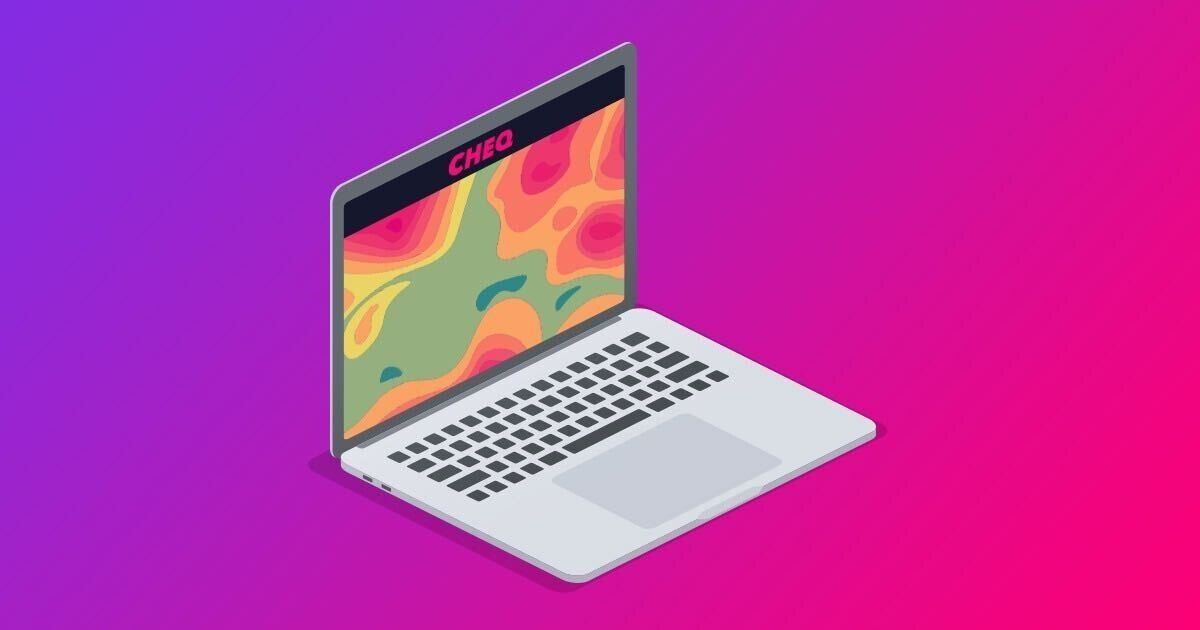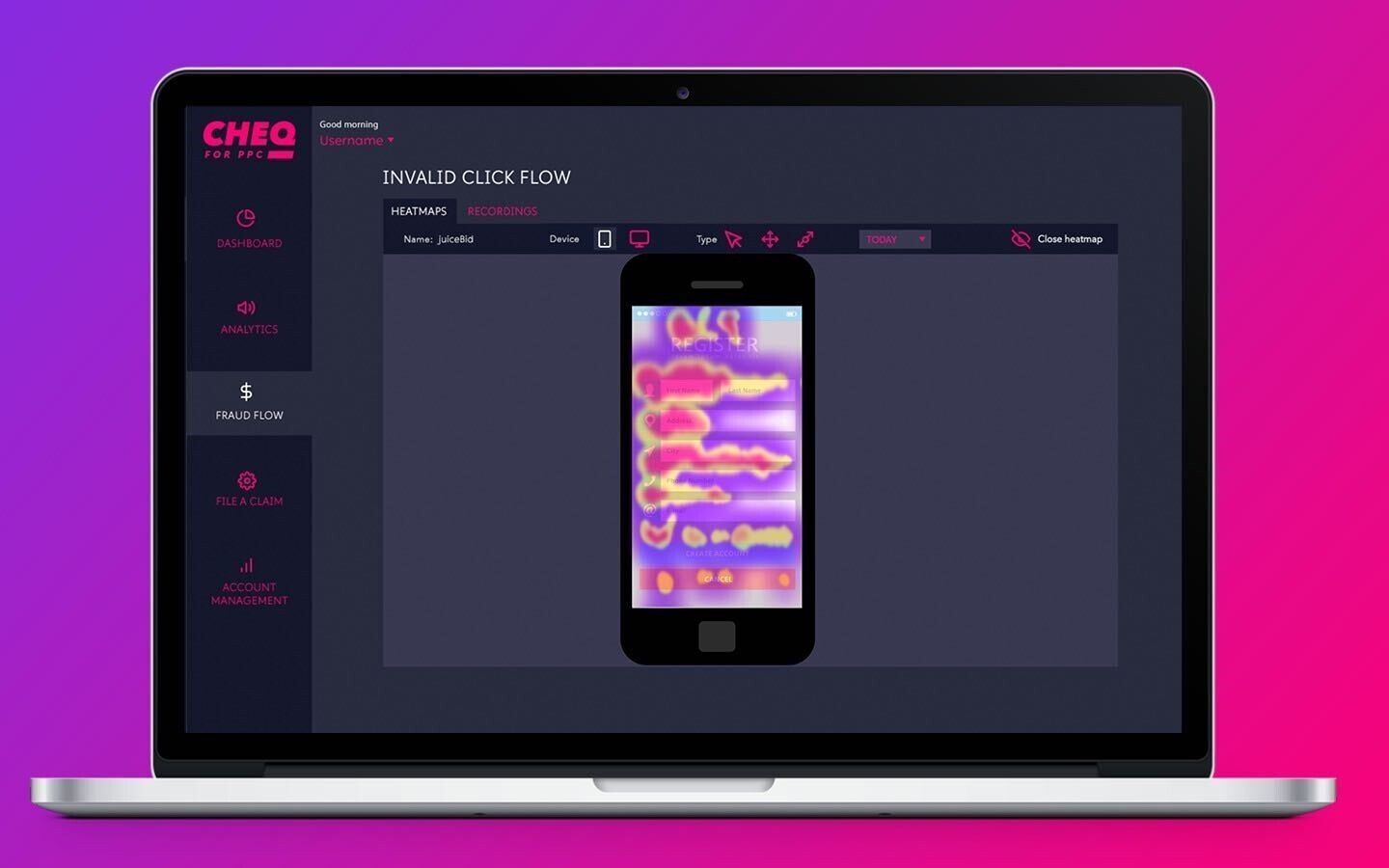Using Heat Maps to fight click fraud
Jonathan Marciano
|Marketing | October 25, 2020

Do those visits on your site seem a little odd? Demand generation experts are increasingly tracking paid campaigns using heatmaps to investigate. Rather than encountering curious customers, who just need a nod in the right direction to convert, marketers are, in fact, finding thousands of bots running riot. Bots loading pages, bots clicking on ads and landing pages, bots scraping prices and content, and bots converting.
Ryan Gellis of global digital ad agency RMG said that in trying to promote a webinar to a C-Suite audience through a targeted LinkedIn campaign, they saw a number of bot-looking clicks through a heat map of recorded sessions. These bots were essentially wasting their daily spend of $500. In Gellis’s words: “Nobody exhibited what I believe is real user behavior on the site after clicking the ad.”
Companies are paying top dollar to attract this unwelcome bot traffic through paid media campaigns.
Gellis used FullStory, one of the many heatmaps on the market. He says: “We are identifying traffic on the site that is not legitimate. 900 people visited the site, just filtered via LinkedIn. We see bounces before the page even has a chance to render. This is despite the fact that we use some of the fastest technology you can use today – progressive web apps, that typically load in one second, but the user bounced in 1.32 seconds. User sessions almost all look like this, bounce after bounce after bounce. Even when pages do load, there is no activity. We run hyper-targeted campaigns, and the behavior does not map to what we expect.”
CHEQ For PPC has now launched advanced heatmaps as a free add-on. Like services such as FullStory and Hotjar, this provides interactive heatmaps of real clicks, actions, and recordings of real (human) sessions. But for the first time, it also unveils the exact movement of the bot and invalid traffic found on campaigns, including Facebook, Google, LinkedIn, Snapchat, and Twitter.
Customers can see in real-time how bots interact across campaigns.
- In an analysis of 177 million bots paid for by marketers as part of their paid digital campaigns, we found 90% of bots arriving via desktop that didn’t even interact with the page – they do not click move, or scroll whatsoever.
- On mobile, the amount of these static lazy bots (no movement whatsoever) is 79% of invalid clicks.
- In 2% of cases, bots reach the checkout pages and become leads – making 1 in 50 leads a bot. This technology shows via any campaign the bot movement from crazy clicks and how bots enter into a warm sales funnel.
If it If it looks like a bot, clicks like a bot, and scrolls like a bot, then it probably is a bot
In another post on Reddit, another ad buyer used heatmaps on their site. In their words, “It is pretty clear that none of our traffic is engaging with our content. Like literally there is no on page activity that resembles anything legit.”
If a picture is worth a thousand words, heatmaps are powerful proof of what is working with real humans. But it also shows the true scale of bot traffic on campaigns. This is the sort of activity that caused $35 billion in ad fraud in 2020.
For instance, an online streaming service using CHEQ For PPC discovered 11% invalid traffic for paid media campaigns designed to attract new customers. They had a bad bot problem. The bot’s journey could be seen, for instance, with 67 bots lured to the ads returned within 24 hours and each returning 7 times. The bots would refresh the same page repeatedly. They stayed for no more than 1 millisecond each time. These visits cost the marketers in wasted ad budget and loss of real (human) leads.
This can now all be revealed in glorious technicolor via heatmaps. The online heatmap is a vital part of digital marketing mix – including giving buyers a clear conscience in their ad spending.
What exactly is a fraud heat map?
When you visit a website, you know you can’t use it without clicking a mouse somewhere or scrolling up and down on a mobile device. Those clicks and scrolls help you navigate pages and find the products, services, or information you’re looking for. Heatmaps use that information to build a better experience, improve your website, and—ultimately—grow your business. A heatmap displays the most popular (hot) and unpopular (cold) elements of the page using colors on a scale from red to blue. In the case of real users, for example, if people move their mouse around the page a lot but don’t click on anything, you will naturally want to find out why. There are ways for sleuths to see bot traffic using Google Analytics, but the heat map is far more vivid.
This shows the full range of bot clicking, scraping, and stealing of ad dollars.
Of course, CHEQ For PPC is not designed to simply observe. The simple 10-minute set up protects some of the world’s largest brands from future attacks. The platform provides cybersecurity protection to prevent any future bot or invalid clicks across Google, Bing, LinkedIn, Snapchat, Facebook and more. This lowers the drawbridge for bots entering a sales funnel.
Though we all know that bots exist, that they are damaging our KPIs and bringing in fake leads, heatmaps provide another way to show that a serious problem exists.
Sometimes seeing is believing.
Get in touch to get your heatmap set up and get your free CHEQ for PPC trial today.
P.S.
Want to protect your sites and ads? Click here to Request a Demo.













